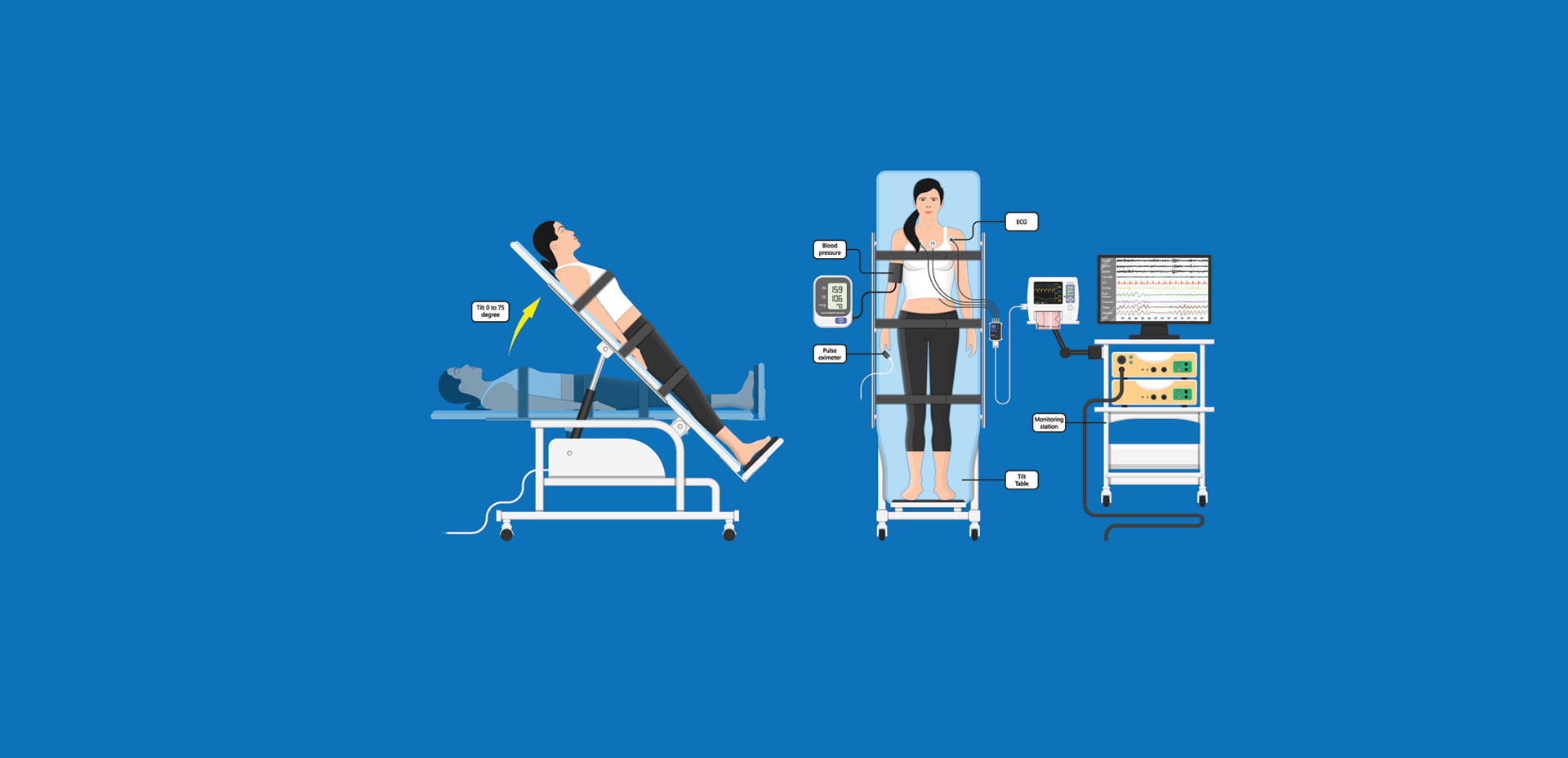New Patients
(201) 212-4079
Existing Patients
(201) 947-4777

We provide Tilt Table Testing as part of our advanced diagnostic services to evaluate the function of the Autonomic Nervous System (ANS)—the system responsible for regulating vital, involuntary bodily functions such as heart rate, blood pressure, digestion, and body temperature. This specialized test is particularly useful in diagnosing unexplained fainting (syncope), dizziness, and other symptoms that may be related to autonomic dysfunction.
During the test, the patient is securely positioned on a motorized table that slowly tilts from a lying down (supine) position to an upright (standing) angle. Throughout the procedure, we closely monitor key physiological responses including heart rate, blood pressure, oxygen saturation, and sometimes cerebral blood flow. The goal is to observe how the body reacts to postural changes—especially how effectively the nervous system maintains blood flow to the brain when gravity causes it to pool in the lower extremities.
Tilt Table Testing is a crucial diagnostic tool for identifying conditions such as Postural Orthostatic Tachycardia Syndrome (POTS), neurocardiogenic syncope (fainting due to a sudden drop in blood pressure and heart rate), orthostatic hypotension, and other forms of autonomic nervous system dysfunction. For patients who experience chronic dizziness, lightheadedness, palpitations, or unexplained episodes of fainting, this test provides critical insight that often cannot be obtained through standard exams.
By understanding how your body responds to changes in position and stress, we can determine whether your symptoms are related to ANS abnormalities and develop a personalized treatment plan. Our team ensures the procedure is conducted in a safe, controlled environment with careful supervision—making it both effective and reassuring for patients seeking answers to complex symptoms.
